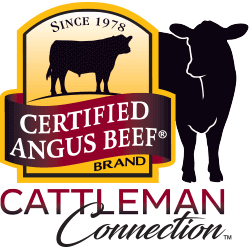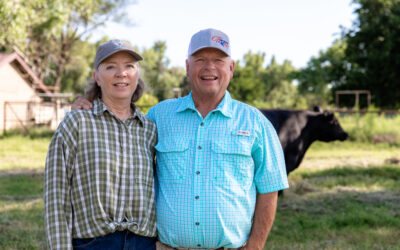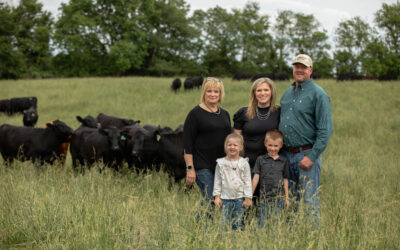
Keeping it simple
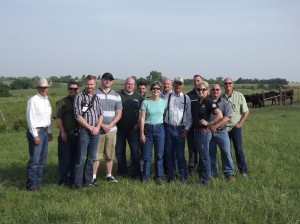
Wrong, but that is the magic behind the beef industry and the Angus breed. By tagging along with the MBA program a couple weeks ago, I learned that it’s okay not to be just like your neighbor or even your family, just do what works for you.
For more than 40 years, Bob and Becky Avery have run their Olsburg, Kan., ranch with the goal of keeping it simple.
For them it means just being ranchers, not farmers, and caring for the land. The cows run year round on more than 1,000 acres of native grassland, supplemented in the winter with purchased feed.
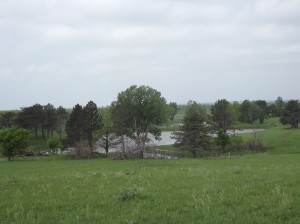
Bob says he loves his cattle, but they can come and go; the land gets top priority because it will be here forever.
With 140 Angus-based cows to breed this summer and calve out next spring, continuity is important. That doesn’t mean they’re afraid of change, and in fact they point to two big ones that worked.
The first was their switch from Hereford to Angus. Bob’s family goes back to the Poole Registered Hereford operation that once thrived near Manhattan, but he started breeding those bulls to Angus cows and found more dollars for Angus calves.
“Everyone wants everything to be black and financially that’s it, they just really are worth more,” says Bob. The breed organization has made his job easy, the calves so good “they sell themselves.”
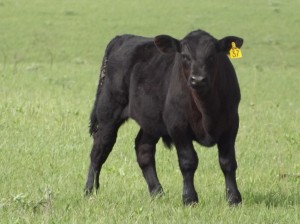
The other reason was the diversity in cattle type. Angus genetics can provide just what any producer wants, Bob says. For the Averys, that’s an easy keeping cow that throws good calves and has a good disposition.
Bob swears he has never had to cull an Angus cow for poor disposition, but he’s not sure if that is due to genetics or environment.
We all have that one friend who really, “thinks outside of the bunk,” and comes up with some unique and sometimes insane ideas. For Bob, that friend is Wally Olson, a former neighbor who now ranches near Vinita, Okla.
“He calls me up with these oddball ideas and I adopt about one out of every four of them, and it works really well,” says Bob.
One of Wally’s “crazy ideas” was getting the couple to switch to the Bud Williams cattle handling philosophy.
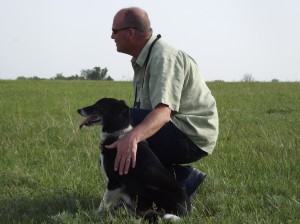
“I think changing the way we handle our cattle was one of the best things we did,” says Becky. “First of all, it makes the cattle calmer and they’re more trusting of us. Second of all, when we work cattle together we get along much better.”
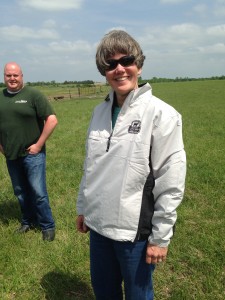
Reducing stress, the Averys have seen improved herd health, easy calving seasons and improved carcass quality.
By keeping it simple, Bob and Becky have learned how to get the most out of their bottom dollar.
-Kaitlin
To catch up on our coverage of the other two Kansas ranches who hosted CAB guests, read “Connections” and “Incorporating a legacy of quality.”
You may also like
Legacy in the Golden Land
On a quiet stretch of Northern California rangeland, a different story unfolds. The Borror family’s legacy modestly speaks through the cattle they raise, the ground they steward. The generations who’ve made a life here demonstrate commitment to doing things right, even when no one is watching.
Helping Hands, Helping Herds
“When I die, I want to come back as one of your cows,” murmurs a friend to Steve Zybach. Full to the brim from an alfalfa ration every day, bountiful fields of lovegrass stretched out across the Texas Panhandle—and owners who leave no ounce of cattle care up for question. The Zybachs’ motivation for this level of dedication to their Angus cattle is simply love.
An Ambassador for All
Joanie, with daughter Lindsey and her husband, Adam Hall, raise registered Angus cattle with two primary goals: producing high-quality seedstock that perform well in a wide variety of environments and ensuring end-user satisfaction. Those goals tie everything together, from promoting Angus to other producers to sharing their story with CAB partners and beef consumers.
